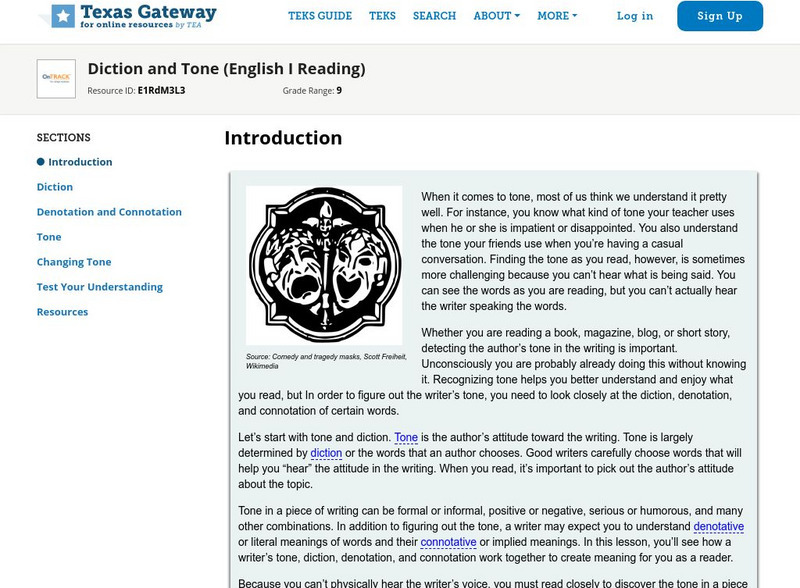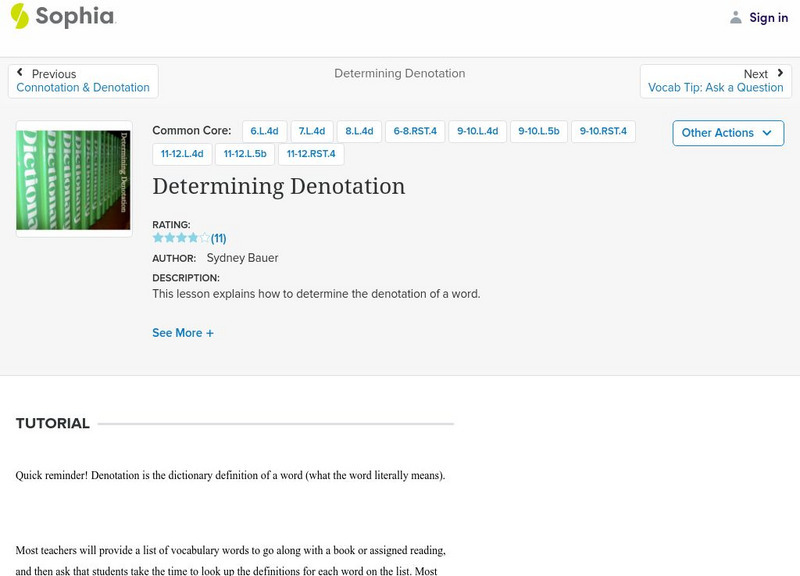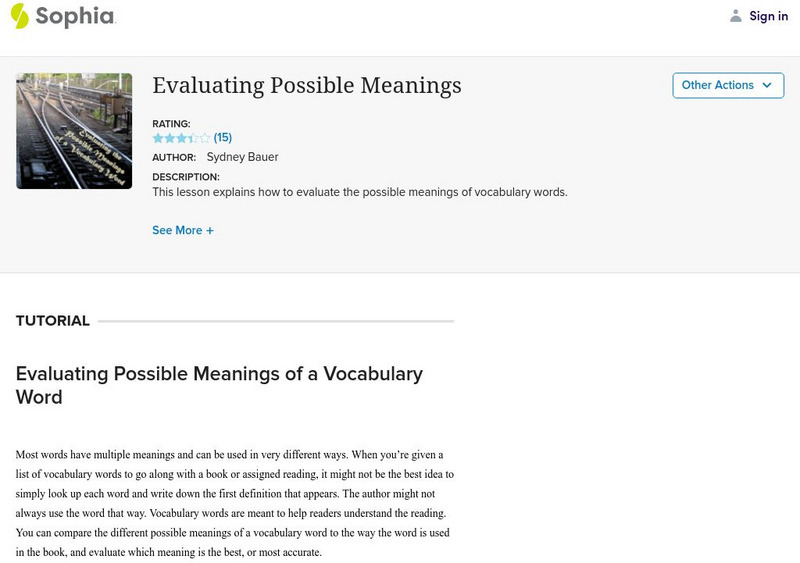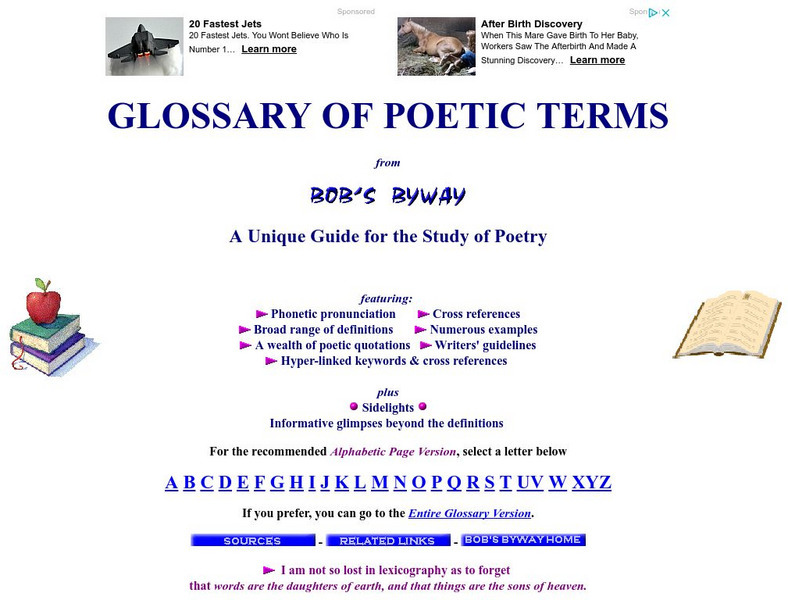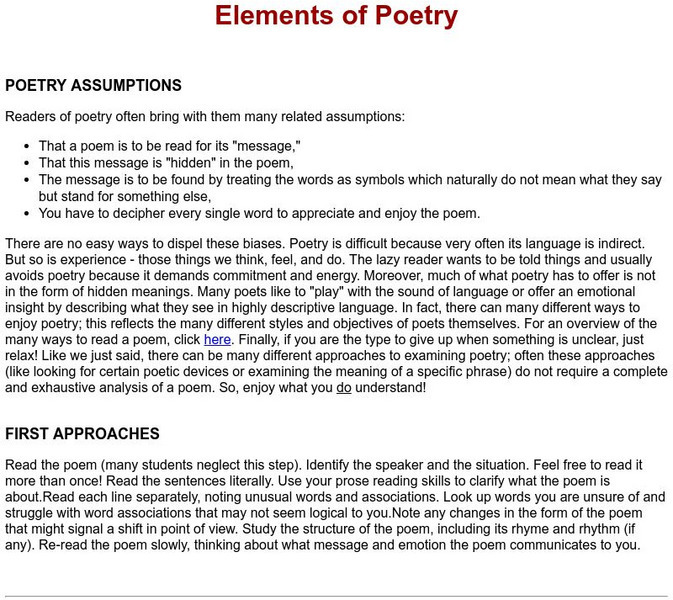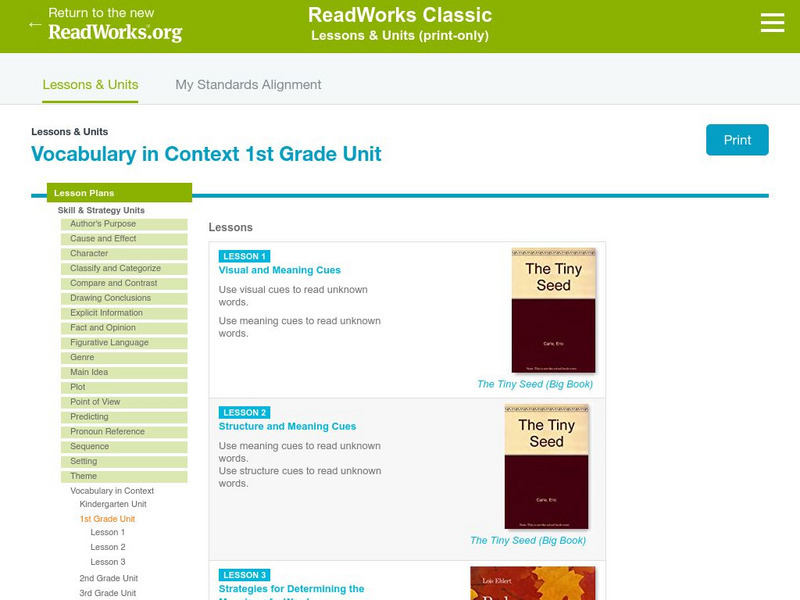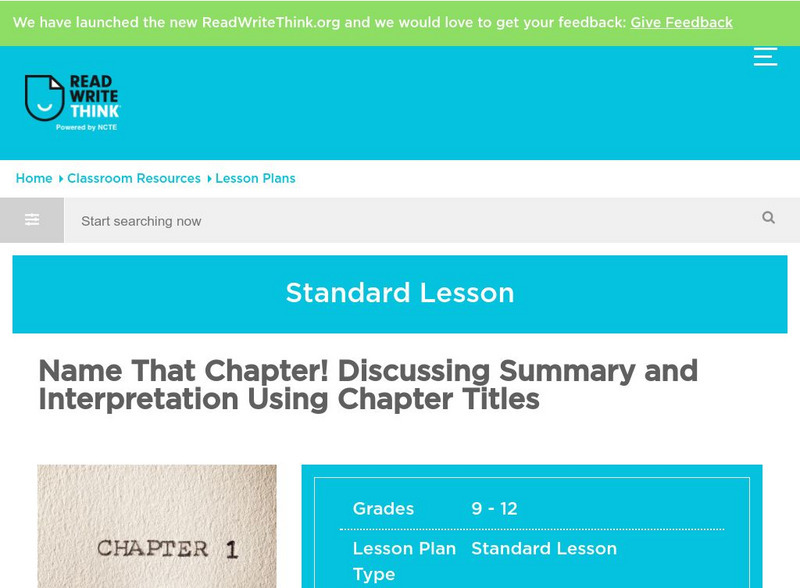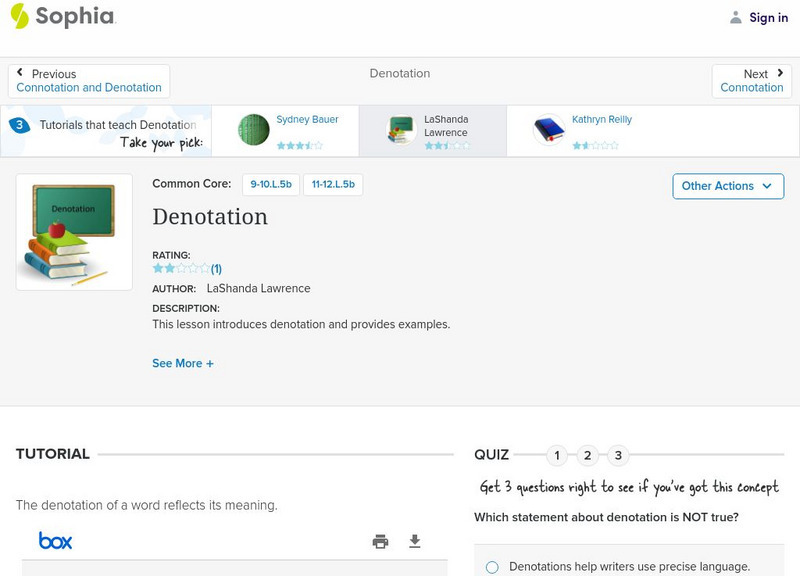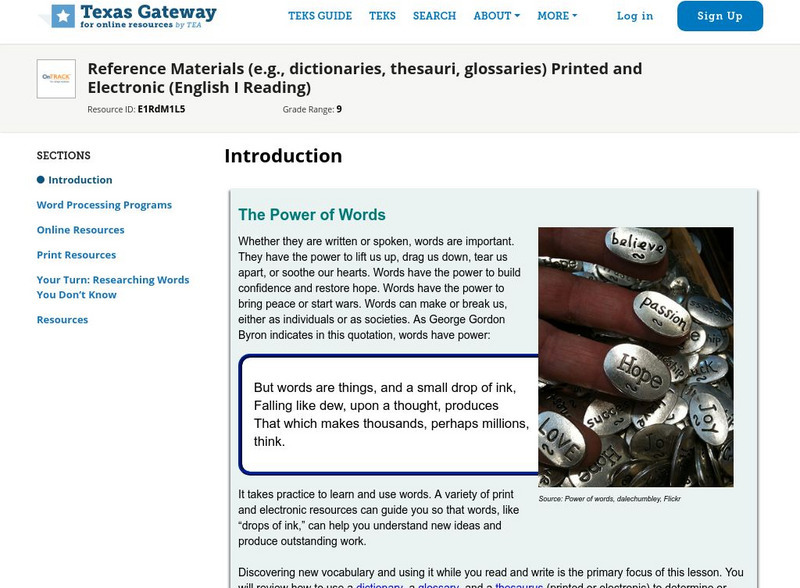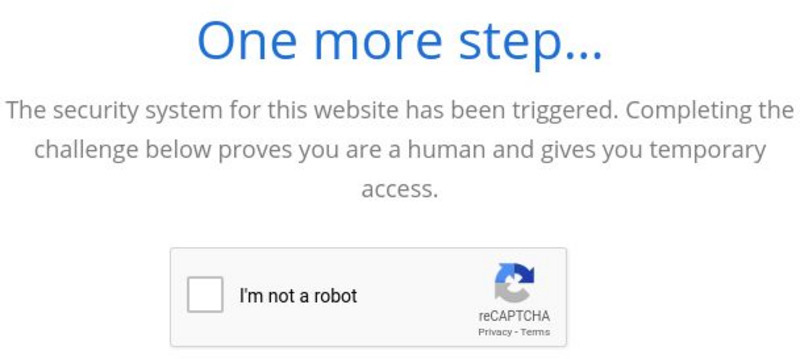Texas Education Agency
Texas Gateway: Reference Materials Printed and Electronic
Learn how to use dictionaries, glossaries, and thesauri in order to determine meanings of words and phrases, including their denotations, connotations, and etymologies.
Texas Education Agency
Texas Gateway: Diction and Tone (English I Reading)
In this lesson, you'll see how a writer's tone, diction, denotation, and connotation work together to create meaning for you as a reader.
Reading Rockets
Reading Rockets: Developing Academic Language: Got Words?
This is a research-based article concerning how to best teach academic vocabulary. Research finds that most teachers assign and mention vocabulary, but to be effective, instruction must be direct and meaningful. Recommendations for...
Sophia Learning
Sophia: Determining Denotation
This lesson explains how to determine the denotation of words; it defines denotation and offers a plan of action: look up the word in the dictionary, read all meanings paying attention to parts of speech, and compare each of these...
Sophia Learning
Sophia: Evaluating Possible Meanings
This lesson explains how to evaluate the possible meanings of vocabulary words. An audio lesson [3:07] and notes are included in this tutorial. CCSS.ELA-Literacy.CCRA.L.4
Texas Education Agency
Texas Gateway: Diction and Tone (English Iii Reading)
[Accessible by TX Educators. Free Registration/Login Required] In this lesson, students will learn how to find the tone in a passage using a close reading strategy. They will also look at diction and discover that examining a writer's...
Other
Bob's Byway: Glossary of Poetic Terms
Calling itself "unique," Bob's is easy to use, with cross-links throughout, phonetic pronunciation guides when necessary, and many examples and quotations. Click on the letter and scroll for the word.
Other
Lexiconic.net: Elements of Poetry
This resource explains how to approach an analysis of a poem. It discusses assumptions people may have, the importance of reading it closely before analyzing it, looking at the stanza structure, the type of poem, the sound patterns,...
Texas Education Agency
Texas Gateway: Literary Text: Diction and Tone
This lesson deals primarily with diction and tone and how to recognize them in your reading. Tone is largely determined by diction or the word choices a writer makes. The process of choosing the right word involves denotation and...
Read Works
Read Works: Vocabulary in Context 1st Grade Unit
[Free Registration/Login Required] This website provides a series of three lesson plans designed to teach students to use visual, meaning, and structure clues separately and together to determine the meaning of unknown words. Lessons are...
Curated OER
Mc Graw Hill: Analyze Language Choices
Learn about figurative language and how to determine the figurative, denotative, and connotative meanings of words.
ReadWriteThink
Read Write Think: Name That Chapter! Discussing Summary and Interpretation
Students name unnamed chapters in a novel they are reading. They discuss possible chapter names considering accuracy, word choice, and connotation, before settling on a choice.
Texas Education Agency
Texas Gateway: Reference Materials: Printed and Electronic
You will learn how to use dictionaries, glossaries, and thesauri in order to determine meanings of words and phrases, including their denotations, connotations, and etymologies.
Other
Common Core Standards Bellringers: Grade 8: English Language Arts [Pdf]
See pages 15, 31, and 47 of this 227-page document for activities where students must order sets of words from most negative to most positive connotation.
TES Global
Tes: Varieties of English
[Free Registration/Login Required] This graphic organizer will help student reflect on the similarities and difference among formal and informal word choices. Dialect, idiolect, and verb effectiveness are featured.
Sophia Learning
Sophia: Euphemisms: Lesson 1
This lessons introduces euphemisms and discusses their use. It is 1 of 3 in the series titled "Euphemisms."
Sophia Learning
Sophia: Denotation: Lesson 3
This lesson introduces denotation and provides examples. It is 3 of 3 in the series titled "Denotation." CCSS.ELA-Literacy.CCRA.R.4, L.9-10.5b nuances, L.11-12.5b Nuance
Texas Education Agency
Texas Gateway: Reference Materials Printed and Electronic
Find out how to use dictionaries, glossaries, and thesauri in order to determine meanings of words and phrases, including their denotations, connotations, and etymologies.
Texas Education Agency
Texas Gateway: Reference Materials Printed and Electronic
Learn how to use dictionaries, glossaries, and thesauri in order to determine meanings of words and phrases, including their denotations, connotations, and etymologies.
Other
Family Values Network: Guide to Critical Viewing for Parents and Children
The word "television" is often heard with a negative connotation. Because it is impossible to rid the world of the television, learn how to control what is viewed on yours.
Quizlet
Quizlet: Flashcards: Figurative Language Level 1
Practice learning figurative language using these audio-enabled flashcards with literary terms and their definitions. Also provided is a list of terms and definitions (audio available) and links to games and a test. Java is required....

